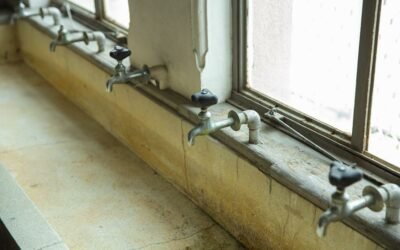Do you ever wonder if mold could be linked to breast cancer?
This article explores the potential connection between mold exposure and breast cancer, backed by scientific research.
Discover the possible mechanisms behind this association and learn practical tips for reducing mold exposure in your environment.
By seeking medical advice and taking early detection measures, you can stay informed and proactive in protecting your health.
Key Takeaways
- There is ongoing research on the potential link between mold and cancer, but no definitive causal relationship has been established.
- Mold exposure has been linked to respiratory problems and weakened immune system function, which could indirectly contribute to cancer development.
- Certain molds produce mycotoxins, which have carcinogenic properties in laboratory settings and may disrupt hormone balance.
- Mold exposure is unlikely to directly cause breast cancer, but it may act as a contributing factor in combination with other risk factors.
The Potential Link Between Mold and Cancer
You can explore the potential link between mold and cancer by examining the evidence and studies surrounding this topic. While there's ongoing research in this area, it's important to note that a direct causal relationship between mold and cancer hasn't been definitively established. However, there are several factors that suggest a possible association.
Studies have shown that certain molds produce toxic substances called mycotoxins, which can have harmful effects on human health. These mycotoxins have been found to have carcinogenic properties in laboratory settings, leading researchers to investigate if exposure to mold could potentially increase the risk of developing cancer.
Furthermore, mold exposure has been linked to respiratory problems and weakened immune system function, both of which are known risk factors for cancer. This suggests that mold could indirectly contribute to the development of cancer by weakening the body's defense mechanisms.
However, it's important to note that the existing evidence is still limited and inconclusive. More research is needed to better understand the potential link between mold and cancer. In the meantime, it's recommended to take necessary precautions to prevent mold growth in indoor environments, such as ensuring proper ventilation and promptly addressing any water damage or moisture issues.
Understanding the Research on Mold Exposure
Continuing the exploration of the potential link between mold and cancer, it's important to delve into the research on mold exposure and its effects.
- Studies have shown that exposure to mold can cause respiratory symptoms such as coughing, wheezing, and shortness of breath. It can also trigger allergies and asthma in susceptible individuals.
- Research has also indicated that prolonged exposure to mold may weaken the immune system, making individuals more susceptible to infections and other diseases. This weakened immune response could potentially contribute to the development of cancer.
- While some studies have suggested a possible association between mold exposure and certain types of cancer, such as lung cancer and sinus cancer, the evidence is still limited and inconclusive. More research is needed to establish a definitive link.
- It's important to note that mold exposure alone is unlikely to directly cause breast cancer. Breast cancer is a complex disease with multiple risk factors, including genetic predisposition and hormonal influences. Mold exposure may potentially act as a contributing factor in combination with other risk factors, but further research is needed to understand the precise mechanisms involved.
Exploring the Possible Mechanisms Behind the Connection
To further understand the potential link between mold exposure and breast cancer, let's now delve into the possible mechanisms behind this connection. While research on this topic is ongoing and still relatively limited, several mechanisms have been proposed to explain how mold exposure might contribute to the development of breast cancer.
One possible mechanism is through the production of mycotoxins by certain molds. Mycotoxins are toxic substances released by molds as they grow, and some studies have suggested that certain mycotoxins may have estrogen-like properties. Estrogen is known to play a role in the development of breast cancer, so exposure to mold-derived mycotoxins could potentially disrupt hormone balance and increase the risk of breast cancer.
Another proposed mechanism involves the immune system. Mold exposure can trigger an immune response, leading to inflammation in the body. Chronic inflammation has been linked to various types of cancer, including breast cancer. It's believed that prolonged exposure to mold-related inflammation may promote the growth of cancer cells and contribute to tumor development.
Furthermore, mold exposure has been associated with oxidative stress, which occurs when there's an imbalance between the production of harmful free radicals and the body's ability to neutralize them. Oxidative stress can damage DNA and other cellular components, potentially leading to the development of cancer.
It is important to note that while these mechanisms are plausible, more research is needed to establish a definitive causal link between mold exposure and breast cancer. Further studies are required to better understand the specific mechanisms involved and to determine how significant the risk is.
Tips for Reducing Mold Exposure in Your Environment
To minimize your exposure to mold in your environment, implement the following tips:
- Keep your environment dry:
- Mold thrives in damp conditions, so it's important to control moisture levels.
- Use dehumidifiers in humid areas.
- Fix any leaks or water damage promptly.
- Ensure proper ventilation in your home.
- Clean and maintain regularly:
- Regularly clean and maintain your home to prevent mold growth.
- Vacuum and dust regularly, paying special attention to areas prone to moisture such as bathrooms and basements.
- Clean and dry any spills or water damage immediately.
- Control humidity levels:
- Maintain indoor humidity levels below 50 percent to discourage mold growth.
- Use air conditioners and exhaust fans in high-moisture areas.
- Consider using a hygrometer to monitor humidity levels in your home.
- Improve air circulation:
- Good air circulation helps prevent mold growth.
- Open windows and use fans to increase airflow, especially in areas prone to moisture.
- Consider using air purifiers with HEPA filters to help remove mold spores from the air.
Seeking Medical Advice and Early Detection Measures
If you're concerned about the potential link between mold and breast cancer, it's important to seek medical advice and take early detection measures. While there's currently no scientific evidence to support a direct causal relationship between mold exposure and breast cancer, it's still essential to prioritize your health and well-being.
If you suspect mold exposure in your home or workplace, consult with a healthcare professional who specializes in environmental medicine or toxicology. They can assess your symptoms and provide guidance on further diagnostic tests or referrals to specialists if necessary. It's crucial to describe your symptoms and any potential exposure to mold accurately.
Early detection of breast cancer is key to successful treatment and improved outcomes. Regular breast self-examinations can help you become familiar with your breast tissue and detect any changes or abnormalities. Additionally, schedule regular mammograms and clinical breast exams as recommended by your healthcare provider.
Conclusion
In conclusion, while there's some research suggesting a potential link between mold exposure and breast cancer, more studies are needed to establish a definitive connection.
It's important to reduce mold exposure in your environment by maintaining good ventilation, controlling humidity levels, and promptly addressing any water leaks or mold growth.
Early detection measures and seeking medical advice are crucial for identifying and treating breast cancer. Stay informed and take necessary steps to prioritize your health.






0 Comments